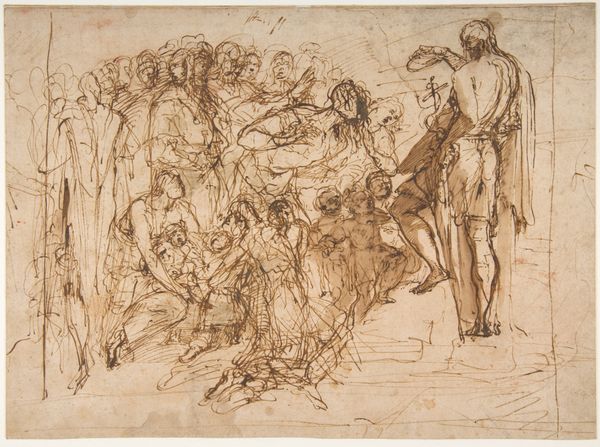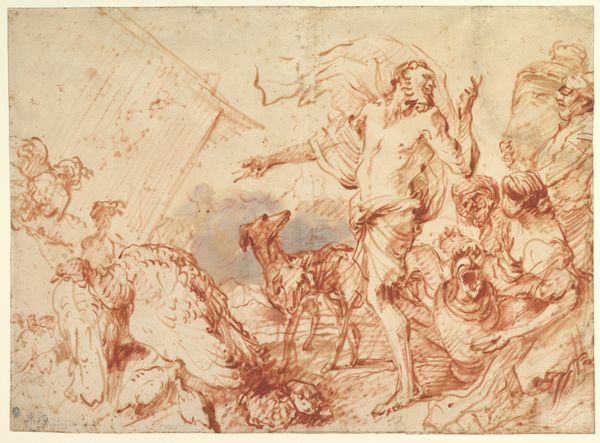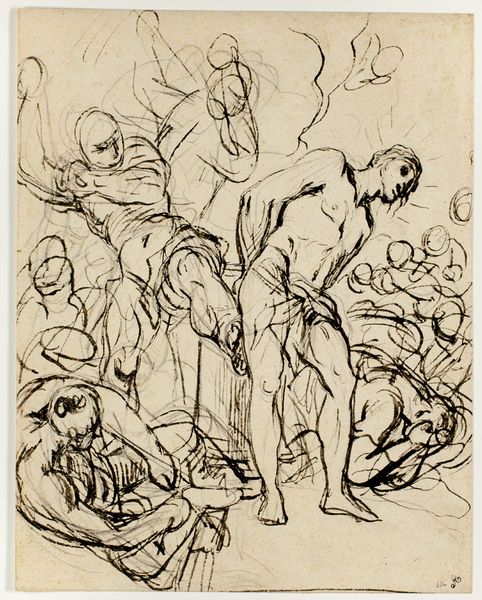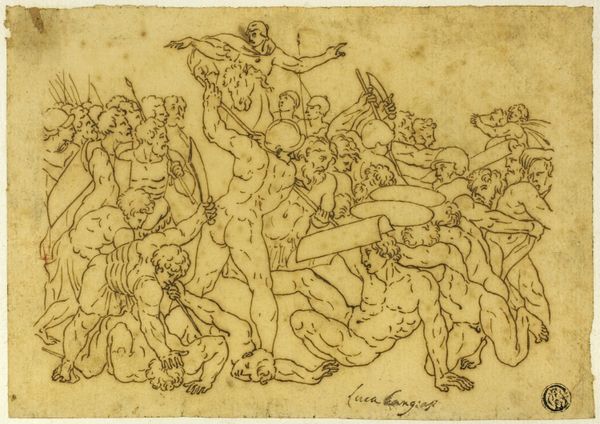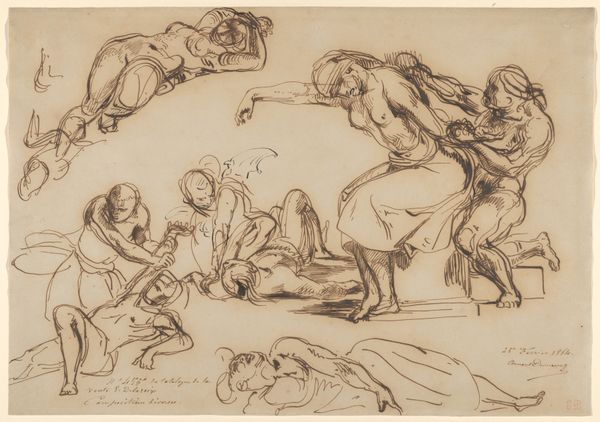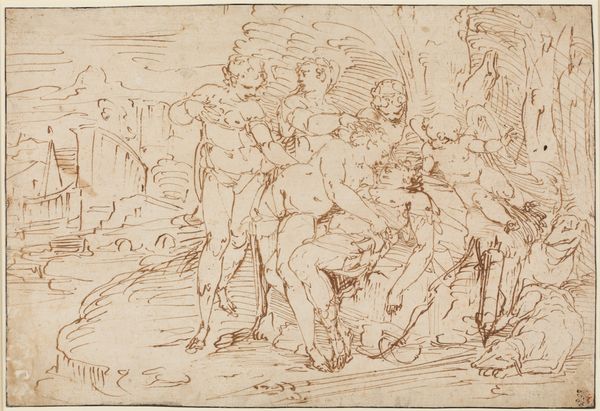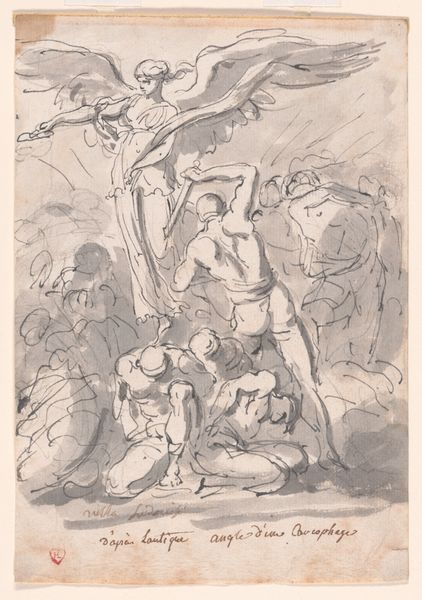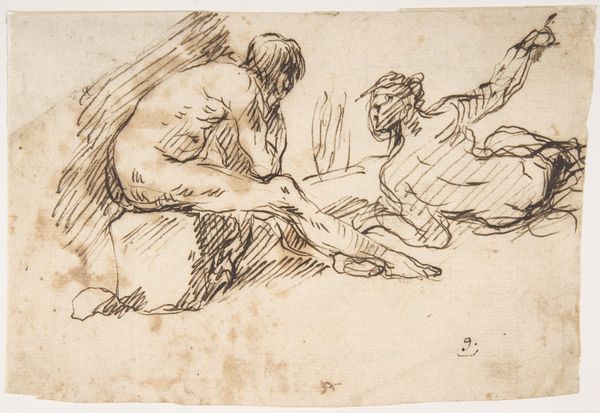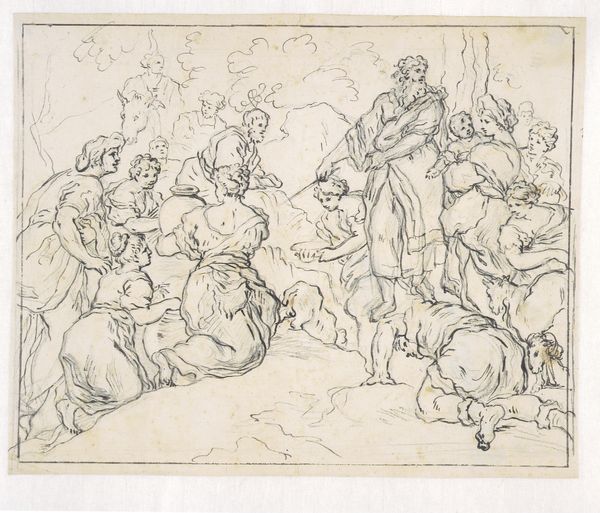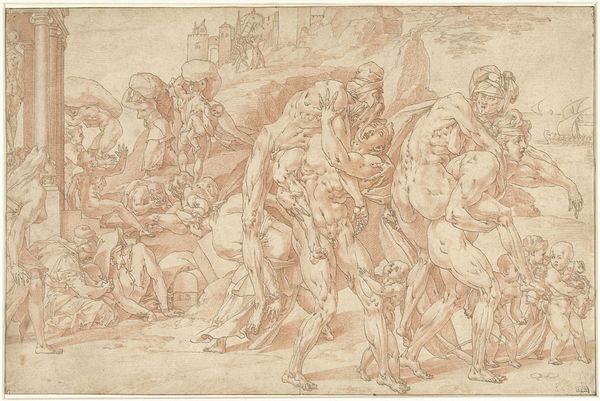
drawing, ink, pen
#
drawing
#
ink drawing
#
allegory
#
baroque
#
figuration
#
ink
#
pen
#
history-painting
Dimensions: 6 1/8 x 6 13/16 in. (15.56 x 17.3 cm) (sheet)16 1/2 x 12 1/2 in. (41.91 x 31.75 cm) (outer frame)
Copyright: Public Domain
Editor: This pen and ink drawing, "Massacre of the Innocents" by Pietro Testa, circa the 17th century, is pretty intense. There's so much movement and, frankly, violence depicted. How do you even begin to interpret something so...fraught? Curator: It's a powerful image, isn’t it? Knowing this work is held at the Minneapolis Institute of Art lets us consider its public role today. What narratives are we choosing to display, and how do they reflect our own values? More broadly, "Massacre of the Innocents", a popular subject during the Baroque era, wasn’t simply about illustrating a biblical story. Consider the socio-political forces at play. What statements might artists have been making about power, tyranny, and resistance in their own time by depicting this event? Editor: So, it's like they’re using a historical event to comment on contemporary issues? Almost like a visual metaphor? Curator: Precisely. Think about who was commissioning such works. Were they intended to critique or perhaps even subtly justify the existing power structures? The choice of imagery, especially those referencing classical antiquity, also played a role in legitimizing authority. Do you notice any classical references here? Editor: I think I see helmets on some figures – like Roman soldiers. And the composition feels very dramatic and theatrical, almost like it's staged. Curator: Good observation. Baroque art often embraced theatricality. Consider how the composition directs your eye, shaping your emotional response to the scene. Does the chaos depicted feel controlled or genuinely overwhelming? Editor: I guess I thought of the historical context mostly as “back then,” but you’re making me see how it’s still relevant to how we display and understand art now. It makes you think about what we choose to remember. Curator: Indeed. The politics of imagery are never truly in the past. Thinking about it that way helps connect the artwork to ourselves. Editor: Thanks for the fresh eyes, I never thought about an old master ink drawing that way before.
Comments
No comments
Be the first to comment and join the conversation on the ultimate creative platform.

